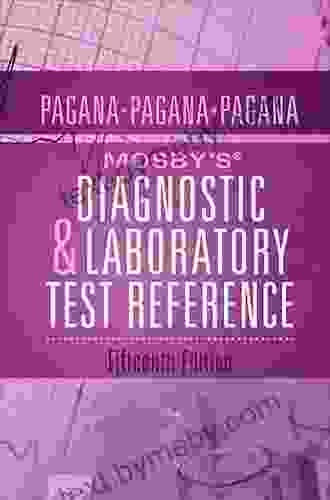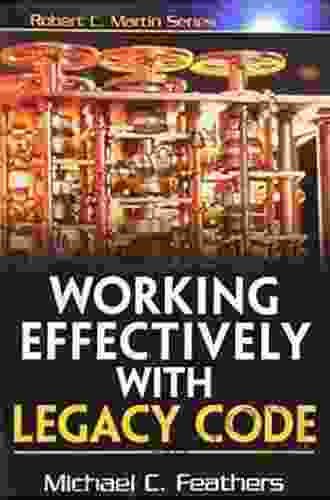Working Effectively with Legacy Code: A Comprehensive Guide for Software Developers

In the ever-evolving landscape of software development, legacy code poses a significant challenge for developers. These codebases, often inherited from previous projects or acquired through mergers and acquisitions, are notoriously difficult to understand, maintain, and evolve. Working with legacy code can be a daunting task, but it is essential for organizations that want to leverage their existing software assets and drive innovation.
In his seminal book, "Working Effectively with Legacy Code," Robert Martin, also known as "Uncle Bob," provides a comprehensive guide to help software developers navigate the complexities of legacy codebases. Martin, a renowned software engineering expert and author of the "Clean Code" series, shares his decades of experience and proven techniques for understanding, maintaining, and evolving legacy code. This book is an invaluable resource for developers who want to unlock the full potential of legacy code and contribute effectively to software projects.
4.6 out of 5
| Language | : | English |
| File size | : | 4323 KB |
| Text-to-Speech | : | Enabled |
| Screen Reader | : | Supported |
| Enhanced typesetting | : | Enabled |
| Print length | : | 458 pages |
Understanding Legacy Code
The first step in working effectively with legacy code is understanding its structure and organization. Martin emphasizes the importance of "code archaeology," a process of exploring and documenting the codebase to gain a deep understanding of its design, architecture, and dependencies. This involves identifying key components, analyzing their relationships, and uncovering the hidden assumptions and constraints that may影响the code's behavior.
Martin introduces the concept of "legacy code smells," which are common patterns and characteristics that indicate potential problems or maintenance challenges. These smells can range from duplicate code and tangled dependencies to unclear naming conventions and lack of documentation. By recognizing and addressing these smells, developers can improve the readability, maintainability, and testability of legacy code.
Maintaining Legacy Code
Once developers have a solid understanding of legacy code, they can focus on maintaining and improving its quality. Martin provides practical advice on how to handle bug fixes, feature enhancements, and other maintenance tasks without introducing new defects or compromising the code's stability. He emphasizes the importance of testing, refactoring, and documentation, as well as the use of appropriate tools and techniques to automate maintenance tasks.
Martin also discusses the challenges of dealing with technical debt, which refers to the accumulated design and implementation flaws that can hinder the long-term maintainability and evolution of software. He provides strategies for managing technical debt, including refactoring, architectural improvements, and incremental code modernization.
Evolving Legacy Code
In addition to maintenance, developers may also need to evolve legacy code to meet changing business requirements and technological advancements. Martin presents a systematic approach to code evolution, starting with identifying the desired changes and assessing their impact on the existing codebase. He emphasizes the need for careful planning, testing, and phased implementation to minimize the risk of introducing defects or disrupting the system's functionality.
Martin discusses various techniques for evolving legacy code, such as encapsulation, abstraction, and design patterns. These techniques allow developers to gradually improve the structure, организации, and maintainability of the codebase while preserving its functionality. By adopting a disciplined approach to code evolution, developers can extend the life of legacy code and adapt it to meet the demands of evolving business needs.
Working Effectively with Legacy Code by Robert Martin is an essential guide for software developers who want to navigate the challenges of legacy codebases. Martin's proven techniques and best practices empower developers to understand, maintain, and evolve legacy code, unlocking its full potential and driving innovation. By embracing the principles outlined in this book, developers can transform legacy code from a liability into an asset, enabling their organizations to leverage their existing software investments and stay competitive in the rapidly changing technology landscape.
Whether you are a seasoned software developer or a junior engineer just starting your career, Working Effectively with Legacy Code is a must-read. It provides a wealth of practical knowledge and insights that will help you work effectively with legacy code, contribute to software projects with confidence, and become a valuable asset to your organization.
4.6 out of 5
| Language | : | English |
| File size | : | 4323 KB |
| Text-to-Speech | : | Enabled |
| Screen Reader | : | Supported |
| Enhanced typesetting | : | Enabled |
| Print length | : | 458 pages |
Do you want to contribute by writing guest posts on this blog?
Please contact us and send us a resume of previous articles that you have written.
 Book
Book Novel
Novel Page
Page Chapter
Chapter Text
Text Story
Story Genre
Genre Reader
Reader Library
Library Paperback
Paperback E-book
E-book Magazine
Magazine Newspaper
Newspaper Paragraph
Paragraph Sentence
Sentence Bookmark
Bookmark Shelf
Shelf Glossary
Glossary Bibliography
Bibliography Foreword
Foreword Preface
Preface Synopsis
Synopsis Annotation
Annotation Footnote
Footnote Manuscript
Manuscript Scroll
Scroll Codex
Codex Tome
Tome Bestseller
Bestseller Classics
Classics Library card
Library card Narrative
Narrative Biography
Biography Autobiography
Autobiography Memoir
Memoir Reference
Reference Encyclopedia
Encyclopedia Lisa Servon
Lisa Servon Louis L Amour
Louis L Amour Marco Stiantoni
Marco Stiantoni M E Rhines
M E Rhines Marion Amberg
Marion Amberg Maggie Oakes
Maggie Oakes Zanna Sloniowska
Zanna Sloniowska Wendy Bernard
Wendy Bernard Rowan Ricardo Phillips
Rowan Ricardo Phillips Sherry Blackman
Sherry Blackman Oscar Lewis
Oscar Lewis Michael Shingleton
Michael Shingleton Nadira Jenkins El
Nadira Jenkins El Michael Koller
Michael Koller Sammy Horner
Sammy Horner Marisa T Mazza Psyd
Marisa T Mazza Psyd Lydia Wilen
Lydia Wilen Nate Crowley
Nate Crowley Michelle Robinson
Michelle Robinson Marc Vetri
Marc Vetri
Light bulbAdvertise smarter! Our strategic ad space ensures maximum exposure. Reserve your spot today!

 Jonathan Hayes50 Successful Applicants Share Key Strategies For Getting Into The College Of...
Jonathan Hayes50 Successful Applicants Share Key Strategies For Getting Into The College Of... Bradley DixonFollow ·10.8k
Bradley DixonFollow ·10.8k Brandon CoxFollow ·13k
Brandon CoxFollow ·13k Troy SimmonsFollow ·2.3k
Troy SimmonsFollow ·2.3k Jake CarterFollow ·5.1k
Jake CarterFollow ·5.1k Timothy WardFollow ·7k
Timothy WardFollow ·7k Robert FrostFollow ·2.2k
Robert FrostFollow ·2.2k T.S. EliotFollow ·5.2k
T.S. EliotFollow ·5.2k Forrest ReedFollow ·17k
Forrest ReedFollow ·17k

 Clay Powell
Clay Powell20 Must Visit Attractions In La Paz, Bolivia
La Paz, Bolivia...

 Giovanni Mitchell
Giovanni MitchellUltimate Guide to Special Forces Skills, Tactics, and...
The world of...

 Joseph Heller
Joseph HellerThe Texas Ranger and Hunter Illustrated: A Visual Journey...
Prepare to embark on an...

 José Martí
José MartíThe Secrets and Science of Ads That Sell More: A...
Are you struggling to create...

 Eli Blair
Eli BlairAdolescents and Their Families: A Comprehensive Guide for...
Adolescence,...

 Neil Gaiman
Neil GaimanMosby Diagnostic and Laboratory Test Reference: The...
In the dynamic healthcare landscape, staying...
4.6 out of 5
| Language | : | English |
| File size | : | 4323 KB |
| Text-to-Speech | : | Enabled |
| Screen Reader | : | Supported |
| Enhanced typesetting | : | Enabled |
| Print length | : | 458 pages |










